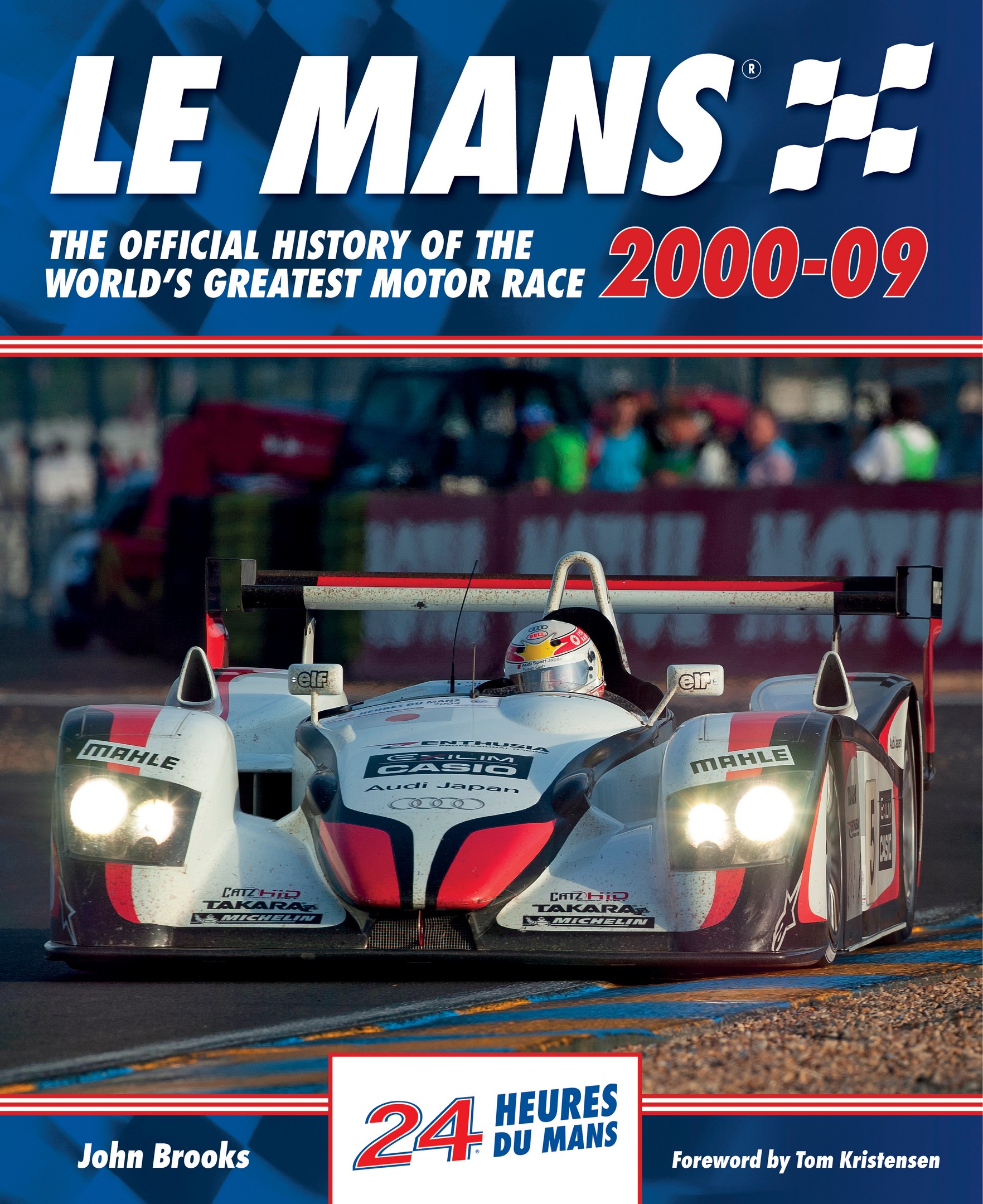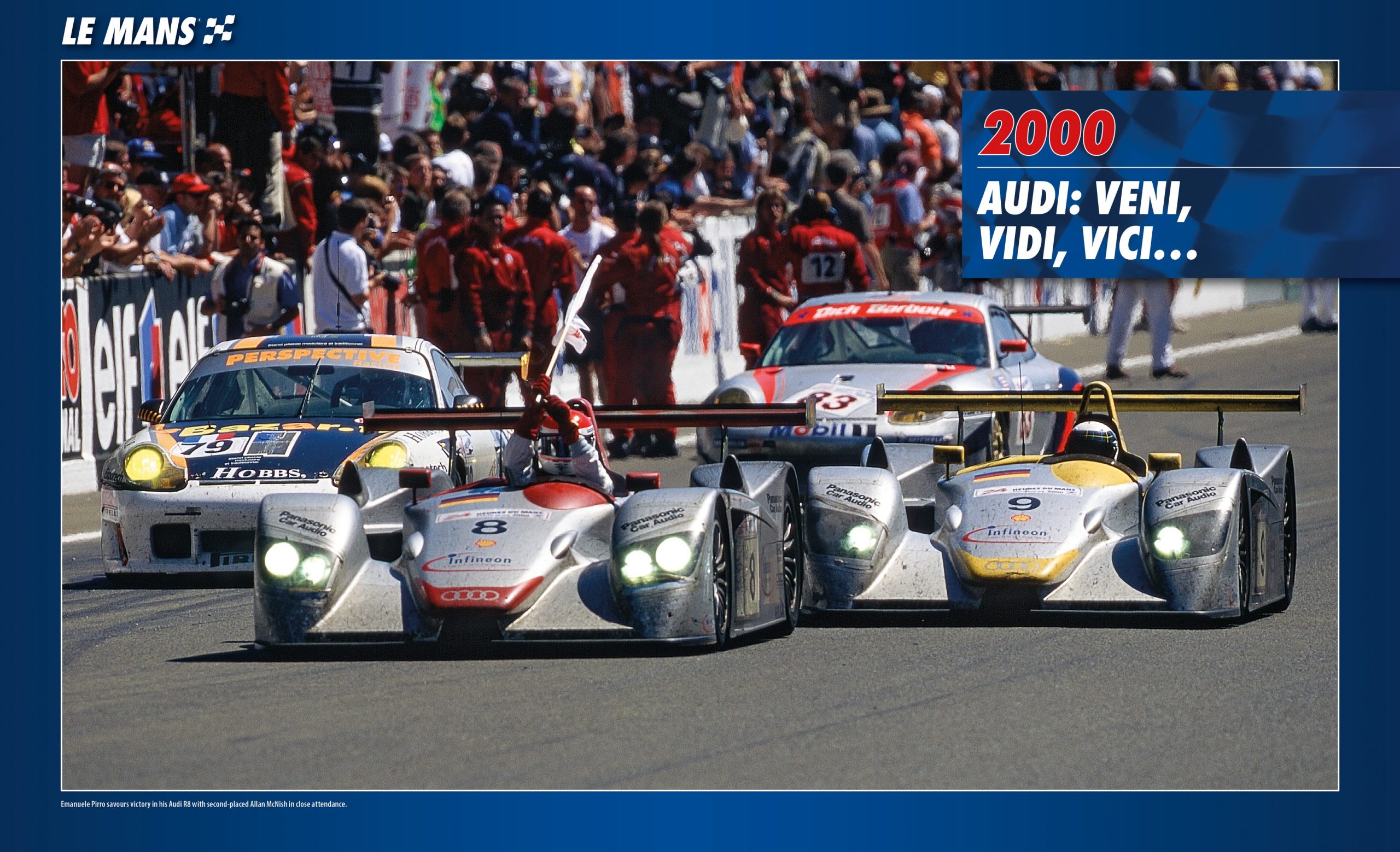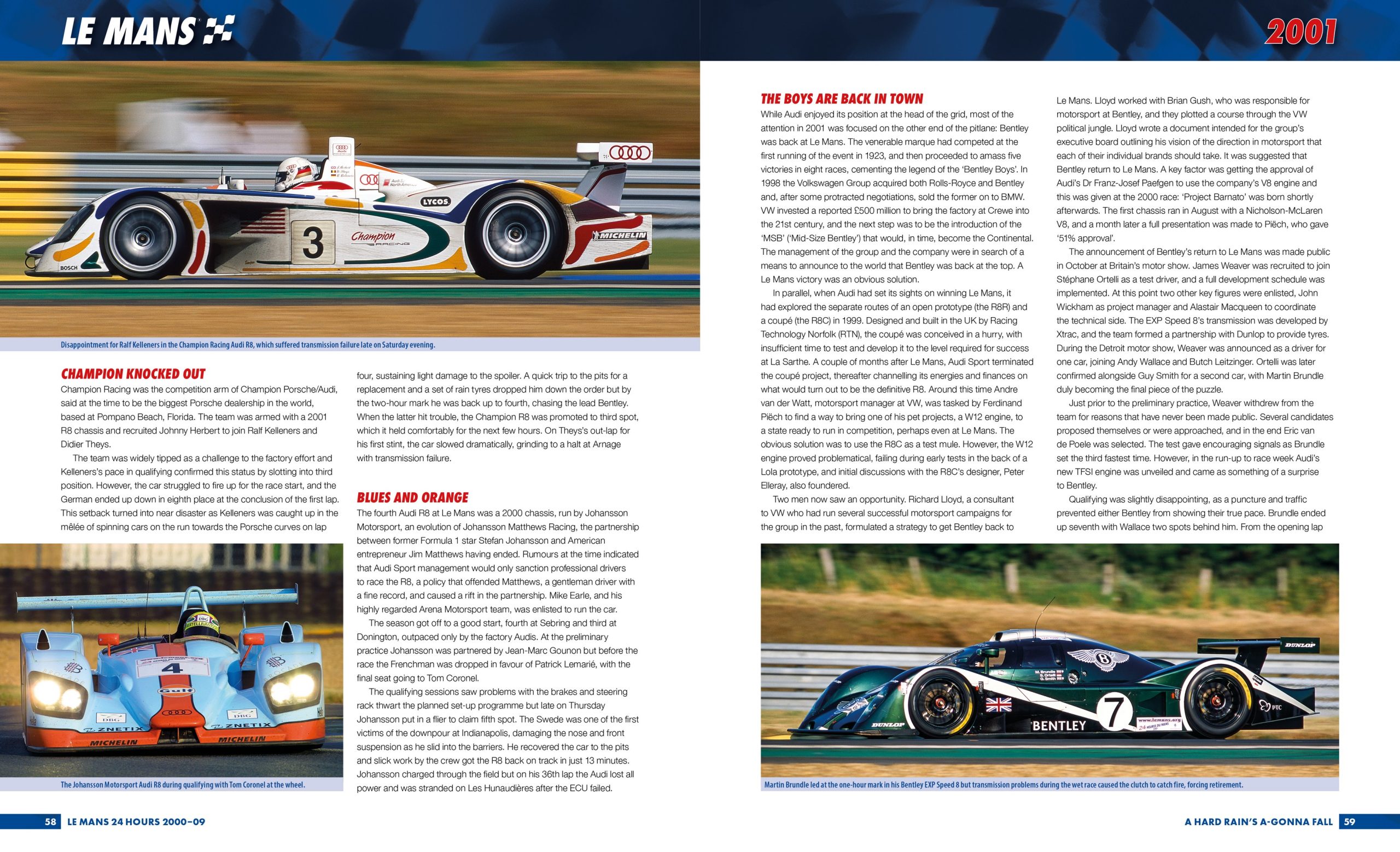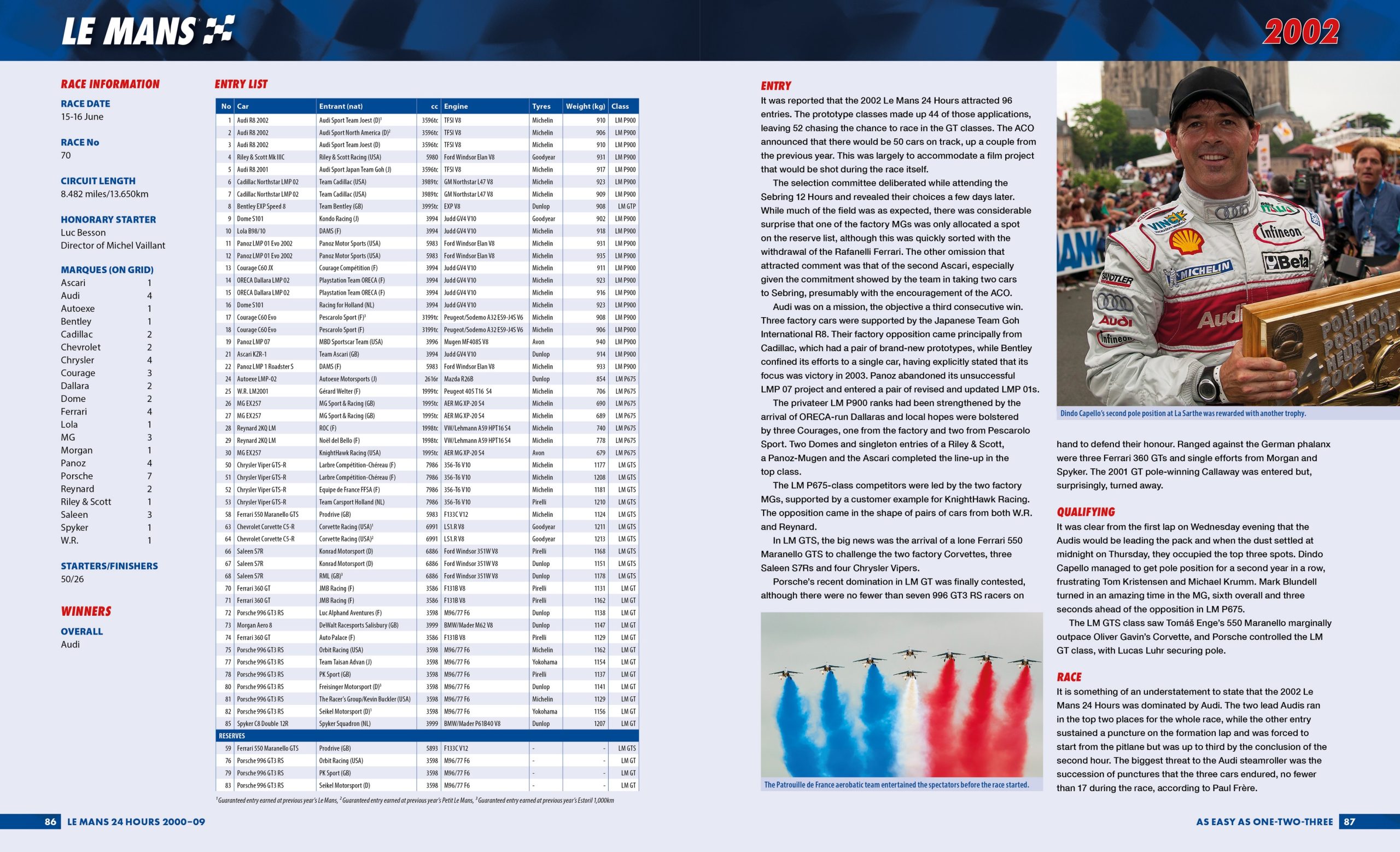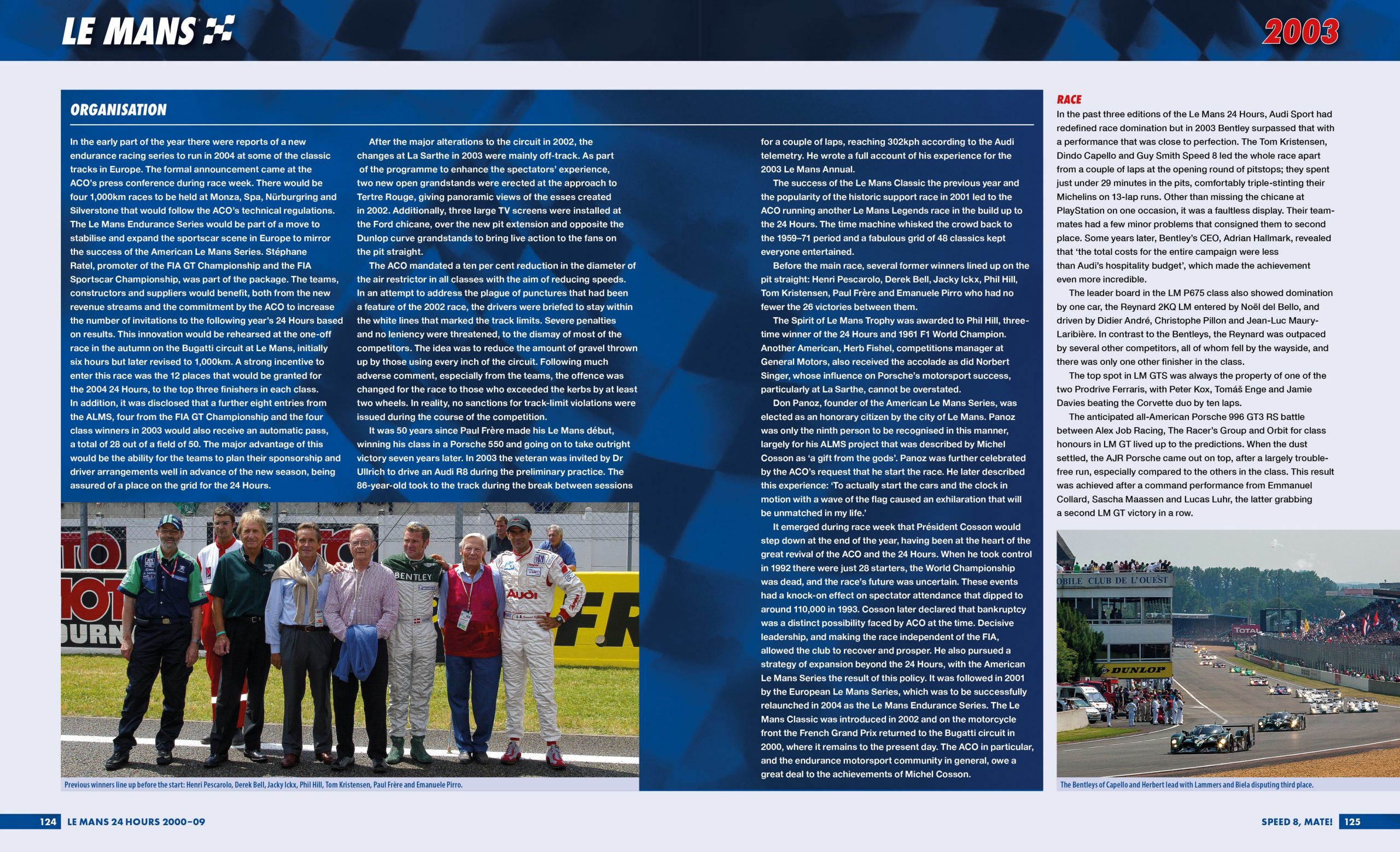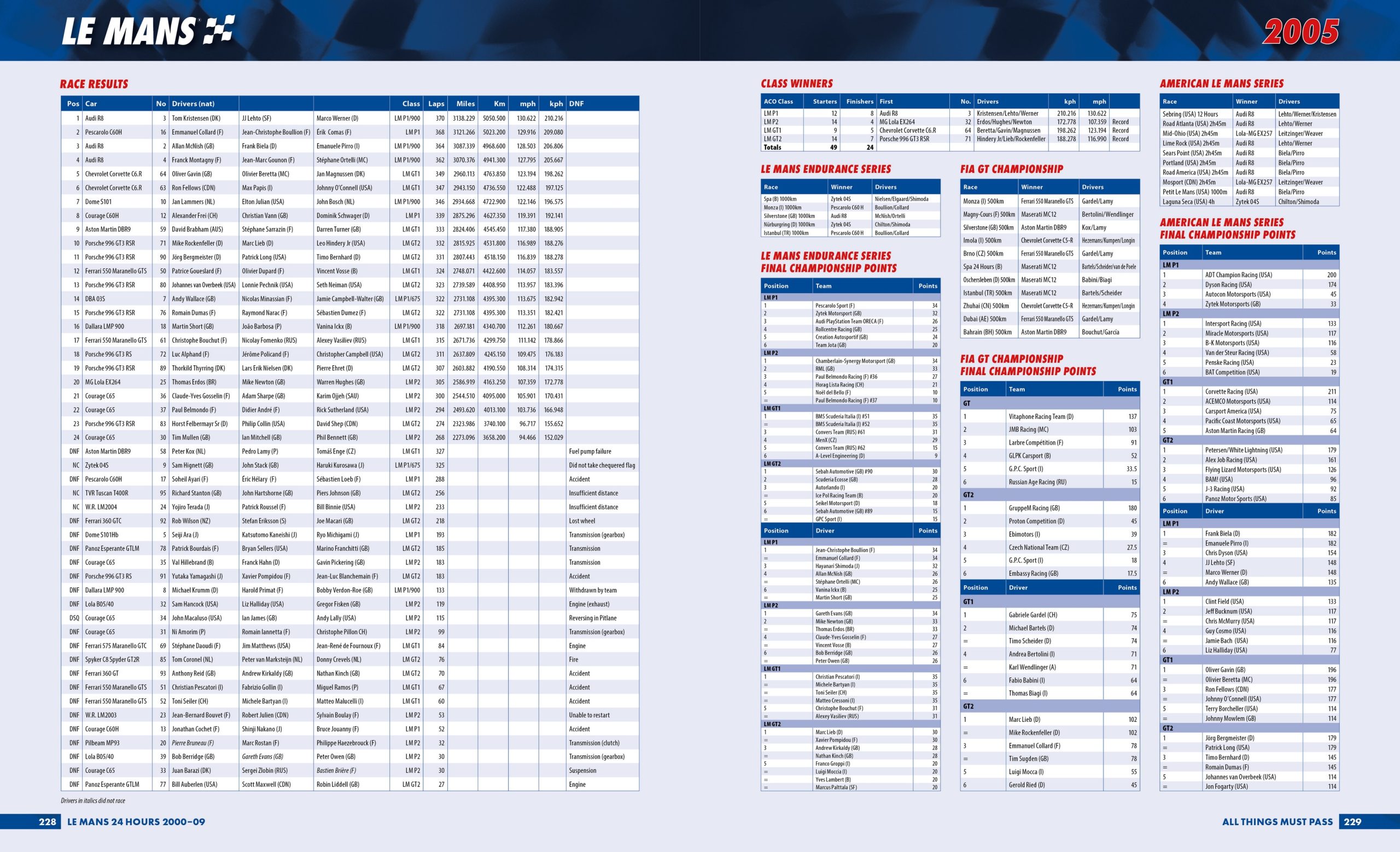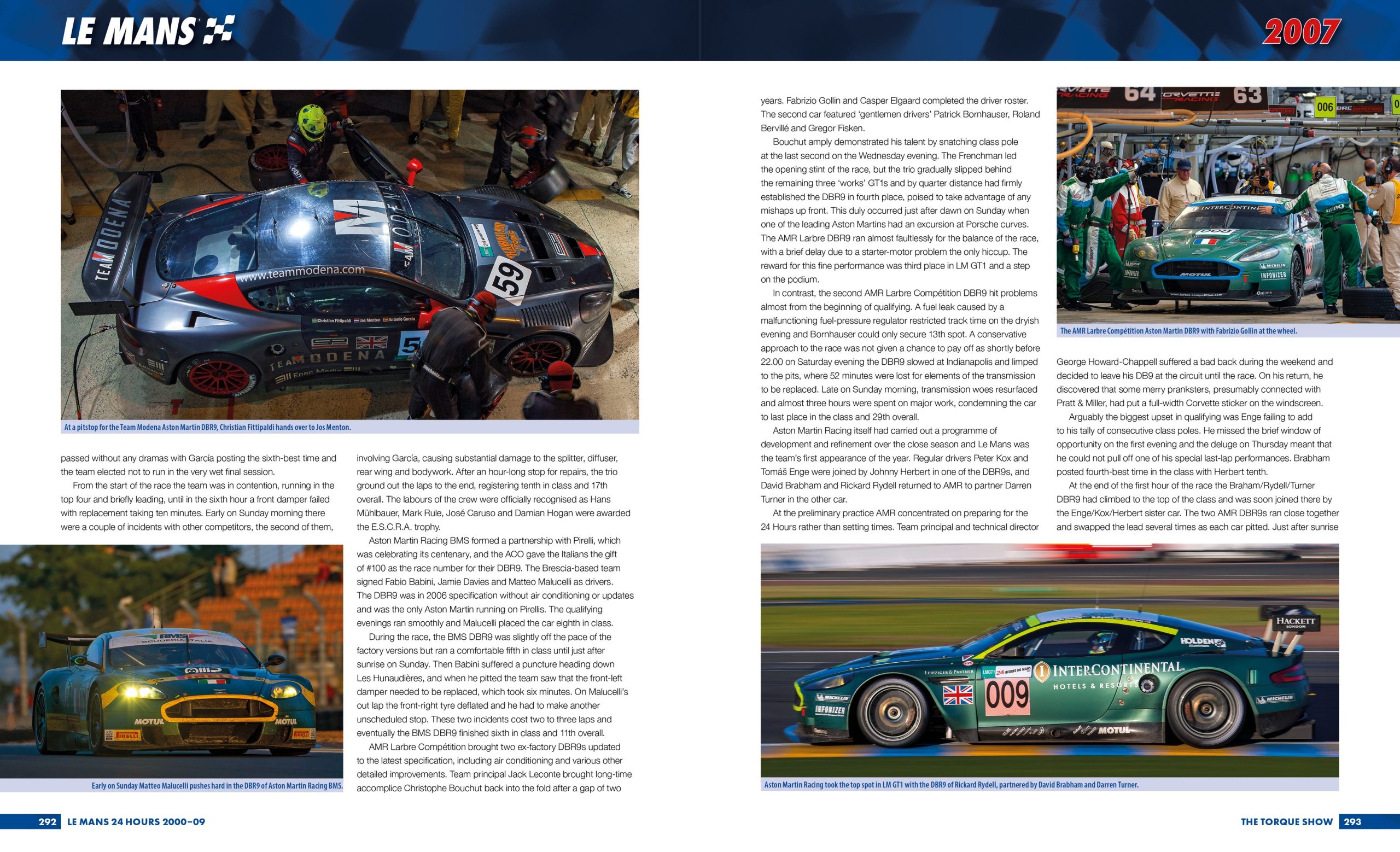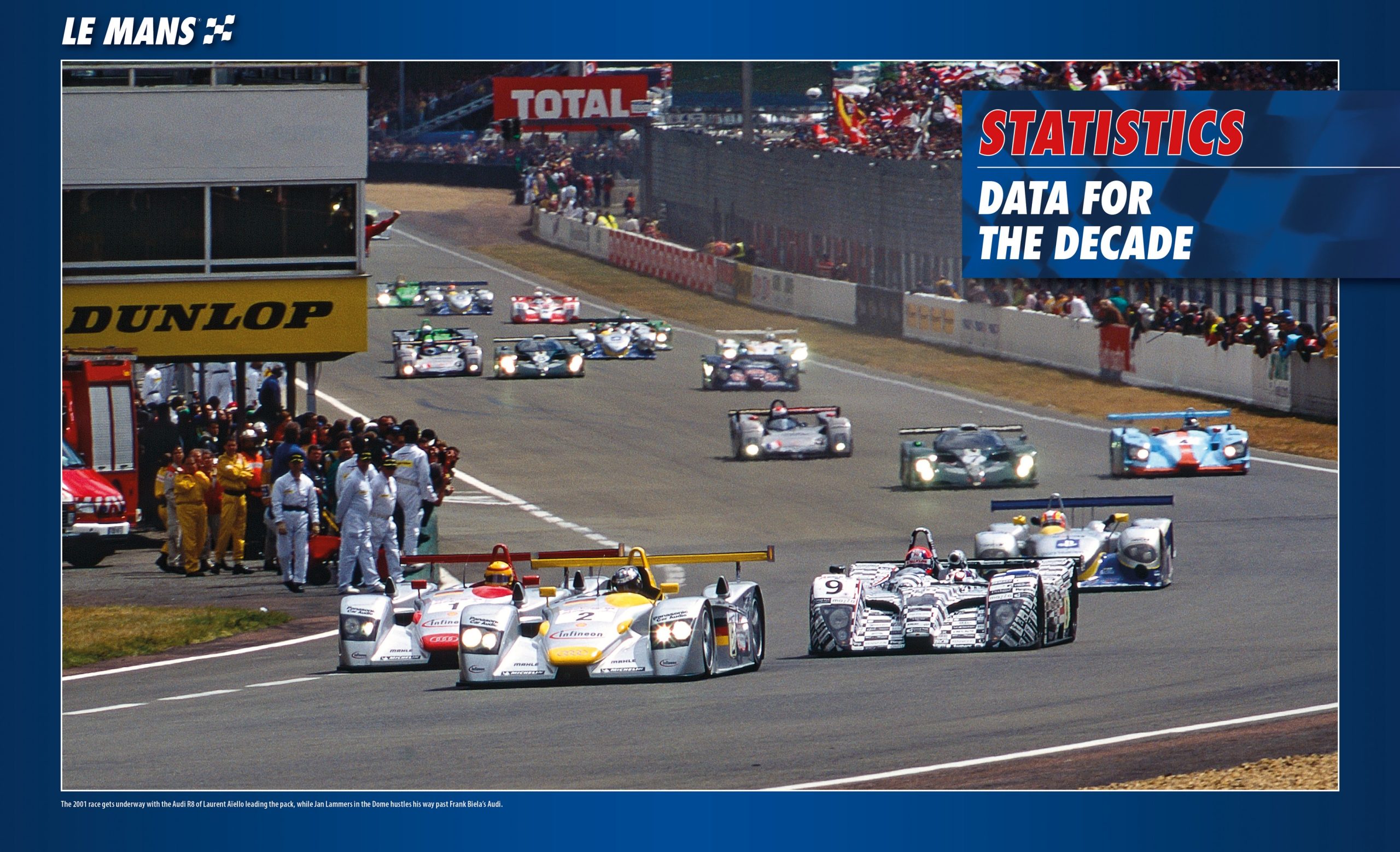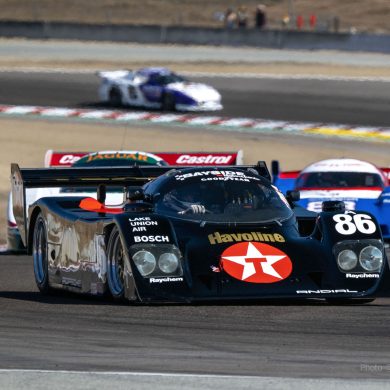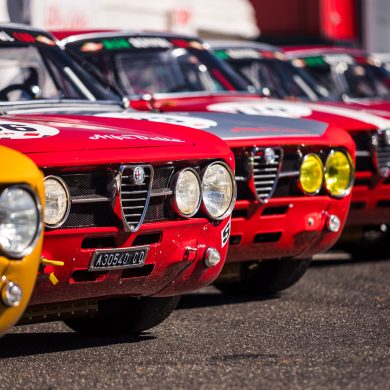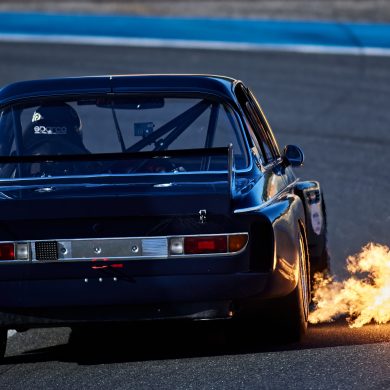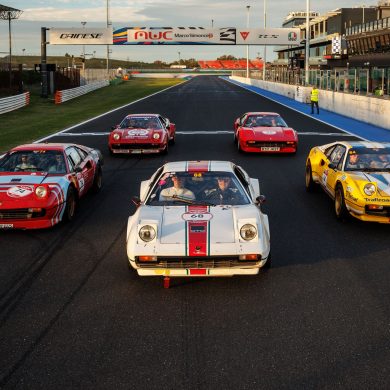All images courtesy of Le Mans: The Official History 2000-09 by John Brooks ©Evro Publishing
Those readers waiting for the next in the line of those fine books published by EVRO on the history of the Le Mans 24 Hours through the decades need wait no longer. The latest edition in the series covering the legendary 24-hour race, namely, the decade of 2000 to 2009, is out now. Written by one of the most accomplished photographers and writers in the business of endurance racing, John Brooks, this edition is every bit as good as those it follows.
John’s knowledge of the 24-hour race, the teams and drivers, and those connected with the race, is astounding. He has attended the race since 1978, first as a young enthusiast, and from 1984 to 2019 as a professional photographer. This has brought him into contact with all the important movers and shakers within not only the iconic French endurance race, but also the wider sport. Knowing the author as this writer does, he is not one to be satisfied with good enough, and always knows the best places around the circuit to get those ‘killer’ shots.
Having worked in the industry professionally for more than four decades, it is little wonder that there are very few people at the top of the sport that John has not met or known well. This has resulted in a contact base that few can match, resulting in a deep knowledge of race cars, teams and associated personnel.
Although this edition starts in the year 2000, which year, strictly speaking, belongs to the previous millennium, the first decade ushered in the period of Audi’s dominance. Audi went on to scoop eight wins in the period covered by this book, but more importantly, the German brand attracted other manufacturers to challenge that dominance.
Notably, these included Bentley (2003) and Peugeot (2009). Whichever way you look at it, Audi’s name was at the top of the leader board, and in those two years when it didn’t win, the manufacturer was still on the podium.
Does this dominance make for a boring decade of racing? Not in the slightest, because other marques came to the LMP1 party, such as Panoz, Chrysler, Courage, Dome, Oreca, Lola, Lister, Dallara, Peugeot, Pescarolo, and so many more. It’s just that the Audi teams were a class act, and their cars were so much more reliable, that enabled them to win more often.
On the GT scene, the competition was, if anything, more intense. Divided initially into GT and GTS, and then GT1 and GT2, the spectators were treated to intermarque battles between Corvette, Saleen, Aston Martin, Porsche, BMW, Chrysler Viper, Ferrari, Spyker, TVR, Pagani Zonda, Morgan, Panoz, Lamborghini, and more.
And during this period, Porsche was also victorious with its RS Spyder in the LMP2 class (2008 and 2009). Other names in the LMP2 class included Radical, Lola, Zytek, MG and more.
Peugeot scored the fastest race lap in 2008, when Stéphane Sarrazin recordeda lap speed of 152.907 miles per hour (246.068 kilometres per hour). Peugeot again recorded the greatest distance for the race during the decade, when the winning car covered a total race distance of 3,235.07 miles (5,206.1 kilometres) in 2009.
In 2008, Peugeot was clocked at 217 miles per hour (350 kilometres per hour) through the speed trap on the Mulsanne Straight. Despite these remarkable achievements, Peugeot was only able to put one victory to its name that decade.
What Do You Get
This volume is longer than its predecessor, adding a further sixteen pages compared with the previous edition. There is also a significant increase in the photo count. It is no surprise that all the images in the book were taken by John Brooks, benefitting the reader immensely, as John has a keen eye for not only good images but also those extraordinary, unexpected shots.
Whether it is the excellent panning shots, the pit lane action, night action, or people shots, Brooks is in a league of his own.
The author has adhered to the same format as the earlier books, making it easy for the reader who has the full series of books from 1923 to 1999 to also follow the layout of this new publication.
Each year has an entry list, an introduction to rule (and other) changes, text and photos relating to that year, followed by the hourly race positions, and the full race results and stats for that year.
At the back of the book, all of these details and stats are combined into data tables for the decade, making year-on-year comparisons easy for the reader.
The book’s Foreword is by none other than “Mr. Le Mans” himself, Tom Kristensen, who racked up no less than seven wins and two third-place finishes, and one DNF. As Tom writes about the author in his Foreword, “His passion and deep understanding of the sport shines through in these pages.”
Coming from the driver with the highest number of Le Mans wins in history, that says it all. This book is officially licensed with the ACO, the organisers of the annual Le Mans 24 Hours race.
If you are a motor racing enthusiast, whether or not you have the other books in this series, this edition is a must-have. It is a remarkably accurate account of the events, results, and achievements in the Le Mans 24 Hour race, and it would make a valuable addition to any motorsport enthusiast’s bookshelf.
Key Information
- Title: Le Mans: The Official History of the World’s Greatest Motor Race 2000-09
- Author: John Brooks
- Foreword: Tom Kristensen
- Publisher: EVRO Publishing
- Published: June 2025
- ISBN: 9781910505717
- Format: 280 x 230 mm, jacketed hardback
- Page count: 416 pages
- Images: More than 500 photographs (all colour)
- Available: https://www.evropublishing.com/collections/new-in/products/le-mans-2000-09
- Price: UK £70.00


